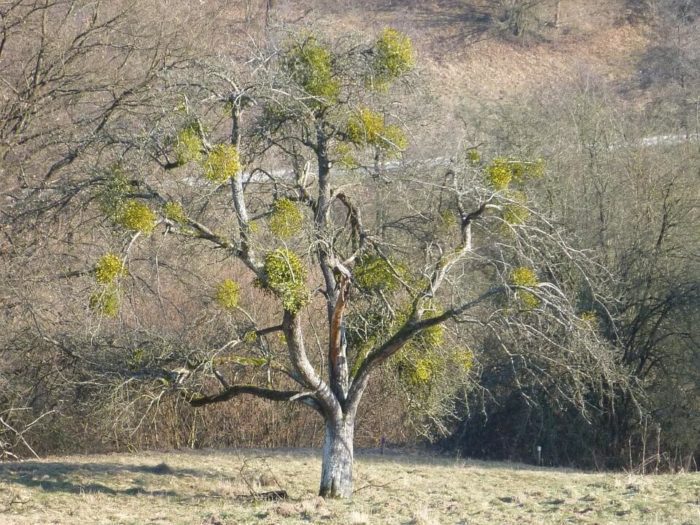Have you ever wondered why holiday traditions have us kissing under the mistletoe? Here are a few fun facts about the plant decorating homes around the world this time of year.
What It Looks Like
Mistletoe has smooth, oval evergreen leaves with clusters of small white, pink, or red berries, depending on the species. There are more than 1,300 different varieties worldwide.
Where Mistletoe Grows
A symbiotic relationship exists between mistletoe and birds; the feathered friends eat the berries and disperse the seeds throughout the forest in their droppings. That’s why the plant is often found growing on trees.
Parasitic Qualities

Mistletoe is a parasite that grows on trees and shrubs. According to the National Wildlife Foundation, the white berries of dwarf mistletoe can explode and shoot seeds as for as 50 feet away.
Mistletoe steals the food and water from its host, and a tree infested with the plant will likely end up dying.
But it’s not all bad; the dead trees serve as perfect nesting sites for several kinds of birds, and three types of butterflies in the U.S. depend on the plant for survival.
Is It Toxic?
To varying degrees, yes, the plant is toxic to humans. Animals do eat mistletoe when food sources are low.
Why We Kiss Under The Mistletoe
Mistletoe has long been associated with life and fertility since its leaves remain green during the winter while other plants are bare.
But the tradition is believed to be rooted in the Scandinavian myth of Baldur the Beautiful, god of light and spring.
There are different variations of the tale, but in the plot most popular with historians, Baldur has dreams that his life is in danger.
To protect him, his mother, Frigga, goddess of love, asks the earth, air, fire, and water not to harm her son. She forgets to make the same request of mistletoe, and Loki, the god of fire, uses a dart poisoned with the plant to kill him.
Frigga’s tears formed the white berries on the plant, and she declared that mistletoe would never again be used as a weapon. Instead, she would kiss anyone who passed under it.
Not as romantic anymore, is it?